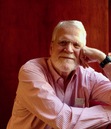Mark Scott Smith's Blog: Enemy in the Mirror, page 74
November 1, 2018
Arab-Israeli War

In May 1948, following the Israeli Declaration of Independence, the ongoing civil strife between Arabs and Israelis erupted into a full-scale war. Armed forces from Egypt, Jordan, Syria and Iraq entered Palestine (Jordan did not attack). Fighting continued for 10 months (with several truce periods) in the former territory of the British Mandate, the Sinai Peninsula and southern Lebanon.

Wikipedia
At the end of the war, Israel was in control of the area proposed by the UN for a Jewish state. Additionally, Israel now controlled ~60% of the area proposed for an Arab state in the 1948 Partition Plan (including Jaffa, Lydda and Ramle, Galilee, parts of the Negev, a wide strip along the Tel Aviv–Jerusalem road, West Jerusalem and some territories in the West Bank). Transjordan retained control of the remainder of the former British mandate, which it annexed, and the Egyptian military took control of the Gaza Strip.

http://jewishandisraeltimeline.blogsp...
The post Arab-Israeli War appeared first on Enemy in the Mirror.
October 30, 2018
Author Interview – Mark Scott Smith
October 29, 2018
Texaco Star Theater

The Texaco Star Theatre with the comedian Milton Berle was first broadcast on radio (1938-1949) before it became an extremely popular American variety show on television (1948 -1956).



As star of tThe Texaco Star Theater, Milton Berle earned the nickname “Uncle Miltie.”

Milton Berle, born in NYC in1908, started in vaudeville at age 10. He later performed as a nightclub comedian with slapstick routines and facial contortions. In addition to numerous film roles, he achieved TV stardom with the Texaco Star Theater,
Milton Berle died in 2002.
The post Texaco Star Theater appeared first on Enemy in the Mirror.
October 25, 2018
Jeju Uprising
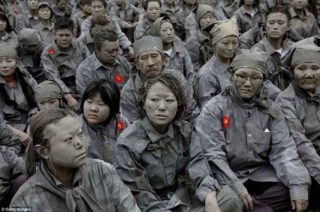
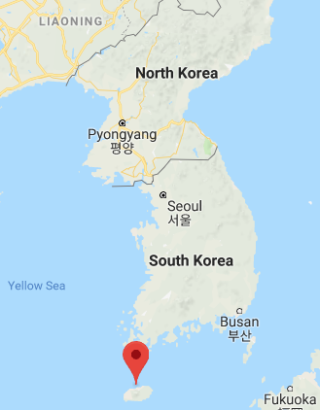
Jeju Island is a 40km x 90km island province of South Korea 120 km south of the Korean Peninsula
The Jeju uprising, which began on April 3, 1948, resulted in extreme suppression by the South Korean Army, police and right-wing paramilitary groups. The rebellion included several hundred mutineers from the South Korean 11th Constabulary Regiment and lasted until May 1949, although small isolated pockets of fighting continued during the Korean War into 1953.
Estimated deaths between opposing factions were between 30,000 and 60,000. Many villages on the island were destroyed and other rebellions were sparked on the Korean mainland.

It is difficult to find a balanced discussion about this rebellion.
It seems clear that the United States Army Military Government in Korea (USAMGIK) tacitly supported the suppression of any left-wing groups that might directly or indirectly enable Communist political goals. On Jeju Island it appears that the USAMGIK was focused more on eradicating the left-wing elements rather than addressing genuine public grievances.
Although some have claimed that agitators, infiltrating the south from North Korea were important in instigating the Jeju rebellion, there is apparently little evidence of this. Whatever the case, it appears that American occupation forces took a hands off approach as right wing South Korean government forces (including paramilitary youth groups) ran amok on the island.
Here is an interesting commentary from the New World Encyclopedia:
“Prevailing sentiment on Jeju was that the local government and police forces were made up mostly of those who had readily collaborated with the Japanese occupation, and there was unrest at heavy taxation of agricultural and fishing commodities reminiscent of the Joseon Dynasty. Many of the Jeju people were more inspired by their perception of a future promoted by Kim Il Sung in North Korea than by the capitalist version taking shape in South Korea, and in Japan.
The Korean National Committee for the Investigation of the Truth about the Jeju April 3 Incident concluded that the USAMGIK shared responsibility for the incident with South Korean forces that perpetrated it because it occurred under the rule of the military government and an American colonel was in charge of the South Korean security forces of Jeju.
This trailer for the film Jiseul begins with the statement: “On November 1948 United States Army in Korea issued an order to kill everyone living 5 km outside...” I tried to find verification for this order but was unsuccessful. It seems the implication is the massacre was an American call – I suspect this is doubtful although USAMGIK was, one way or another, inherently complicit.
The post Jeju Uprising appeared first on Enemy in the Mirror.
October 22, 2018
Superman
The first live-action Superman movie serial, released in 1948 was the most profitable movie serial in history.
Created by writer Jerry Siegel and artist Joe Shuster, Superman first appeared in Action Comics in 1938.
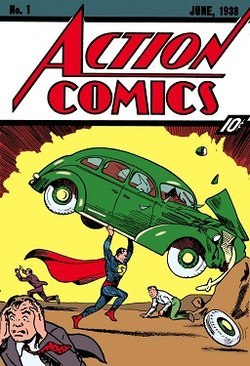
Paramount Pictures released a series of Superman animated short films between 1941 and 1943.
Superman’s model was “Truth, justice and the American way.”
Recently, the comic writer Frank Miller and current Superman writer Brian Bendis have decided to reshape Superman’s backstory for modern times. Miller says: “What I want to do is to help bring him back to this iconic force and maybe play up the truth and justice and just not be so noisy about the ‘American way’ part.”

The post Superman appeared first on Enemy in the Mirror.
October 18, 2018
World Health Organization
The concept of an international health organization was first suggested in 1945 by the Chinese United Nations delegate Dr. Szeming Sze. Although the initial resolution failed, at an international conference the following year, all 51 member countries of the U.N., as well as 10 other countries, signed the World Health Organization Constitution. On April 7, 1948, the World Health Organization (WHO) was officially created as a specialized agency of the United Nations.
The WHO led efforts to eradicate smallpox. Current priorities include communicable diseases, in particular HIV/AIDS, Ebola, malaria and tuberculosis; the mitigation of the effects of non-communicable diseases such as sexual and reproductive health, development, and aging; nutrition, food security and healthy eating; occupational health; substance abuse; and driving the development of reporting, publications, and networking.
The post World Health Organization appeared first on Enemy in the Mirror.
October 15, 2018
North Korean People’s Army
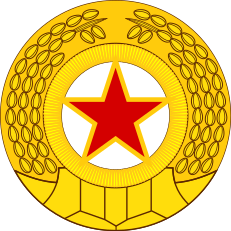
The Korean People’s Revolutionary Army was established in 1932 as a guerrilla force fighting against Imperial Japanese rule that had colonized the country since the turn-of-the-century.
In 1939, the Korean Volunteer Army (KVA), was formed in China to fight alongside Chinese Communist forces against the Japanese. At the end of WWII the KVA was 2,500 strong.
In 1945, during the Soviet Union’s occupation of Korea north of the 38th Parallel, all armed resistance groups in the northern peninsula were ordered to disband. In their place, paramilitary constabulary forces were promoted by Soviet military headquarters.
In February 1948 North Korea announced the activation of the Korean People’s Army (조선인민군; Chosŏn inmin’gun).
Before the outbreak of the Korean War in 1950, the Soviets equipped the KPA with modern tanks, trucks, artillery, and small arms. It’s important to note the South Korean Army had nothing remotely comparable either in numbers of troops or equipment at that time.
The post North Korean People’s Army appeared first on Enemy in the Mirror.
October 11, 2018
Tupperware Parties
The type of plastic that would ultimately be used for food containers was developed by Earl Tupper in 1938. Marketed after WWII as a new lightweight, unbreakable and airtight alternative for food storage, initial hardware and retail store sales were slow.
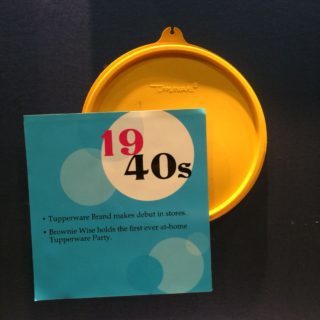
In 1948 the Tupperware company, realizing that many potential consumers didn’t fully understand how to use the product, began hosting home-based parties where the products could be demonstrated and tested. Often sold by homemakers directly to other homemakers, Tupperware created a unique financial opportunity for many women after WWII.
Over the next decade Tupperware products became a household staple in many kitchens. Many variations of the initial product remain in use today.
The post Tupperware Parties appeared first on Enemy in the Mirror.
October 8, 2018
Communists Take Over Czechoslovakia
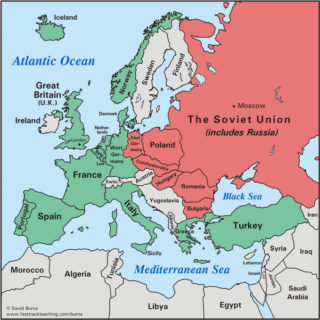
Summary of 1948 events in Czechoslovakia from MACROHISTORY
Feb 8 – The Czechoslovakian Communist party, in cooperation with the General Confederation of Labor and left-wing Social Democrats, is preparing measures to nationalize apartment houses, office buildings and department stores.
Feb 13 – Czechoslovakia’s parliament passes a resolution demanding a report from the Minister of the Interior – a Communist – on the misuse of the police for political purposes.
Feb 15 – Czechoslovakian Communist Antonio Zapotocky, declares: “Away with parliament if it will not fulfill the program of the General Confederation of Labor.”
Feb 18 – The Czechoslovak Communist Party announces certain measures to safeguard the republic. It summons members and sympathizers to be ready for action.
Feb 19 – Czechoslovakia’s Communist labor leadership demands nationalization of every industry in the foreign and wholesale trades with more than fifty employees.
Feb 20 – The ruling Czechoslovakian coalition breaks apart. Non-Communist ministers resign, hoping to force an early election.
Feb 25 – Czechoslovakia’s Interior Minister, a Communist, puts his police around all government buildings
Feb 25 – Czechoslovakia’s Communist prime minister, Klement Gottwald, orders “action committees” to take authority in Prague and throughout the country. The liberal Eduard Benes remains as a powerless president.

Jan Masaryk – Wikipedia
Mar 10 – Jan Masaryk, Czechoslovakia’s liberal nationalist leader and foreign minister, is found dead, dressed in his pajamas, in the courtyard of the Foreign Ministry below his bathroom window. Although the communist-controlled government reported he committed suicide, the story was greeted with skepticism in the West. Many feel this was an act of murderous defenestration – from Latin de- (out of or away from) and fenestra (window or opening).
Here is an interesting analysis: Who Lost Czechoslovakia?
The post Communists Take Over Czechoslovakia appeared first on Enemy in the Mirror.
October 4, 2018
Marshall Plan Initiated
In April 1948 sixteen nations joined the Marshall Plan’s economic cooperation organization.
In the Cold War atmosphere, Eastern European countries in the Soviet sphere that did not join were Czechoslovakia, Poland, Bulgaria, Romania, Hungary and Albania. Finland also did not join, to avoid antagonizing the Soviet Union.
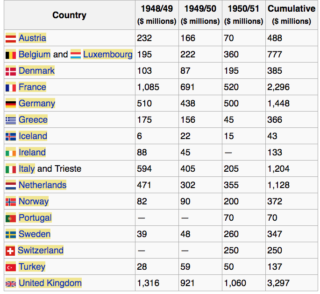
The post Marshall Plan Initiated appeared first on Enemy in the Mirror.
Enemy in the Mirror
I began by posting events around the turn This website www.enemyinmirror.com explores the consciousness, diplomacy, emotion, prejudice and psychology of 20th Century America and her enemies in wartime.
I began by posting events around the turn of the 20th century as I was researching my first novel about the Pacific War. I continued through WWII for my second novel about the Battle of the Atlantic. Now I am beginning to look at the Cold War as I gather information for my next novel about the Korean War. ...more
- Mark Scott Smith's profile
- 7 followers



